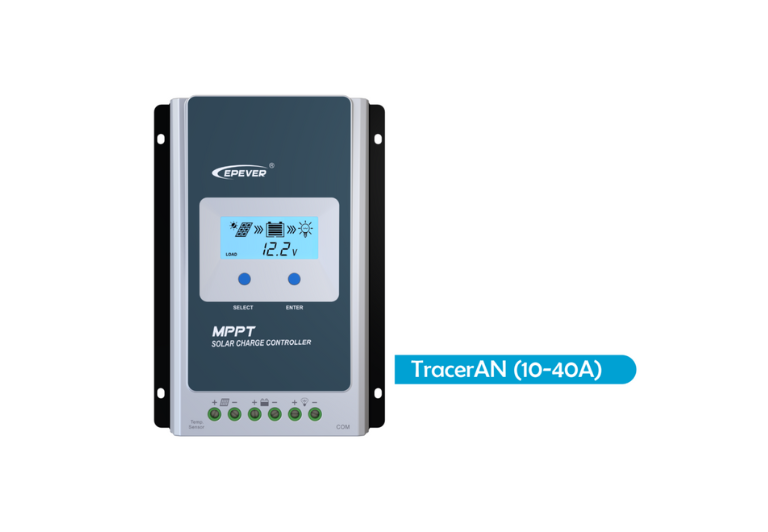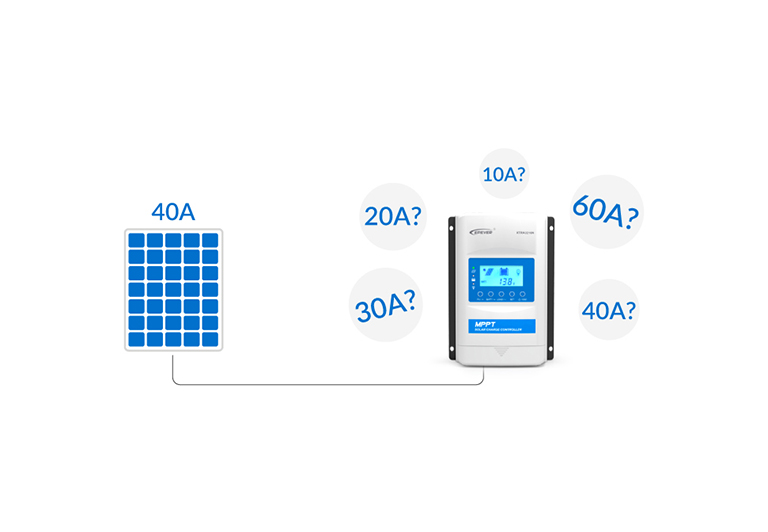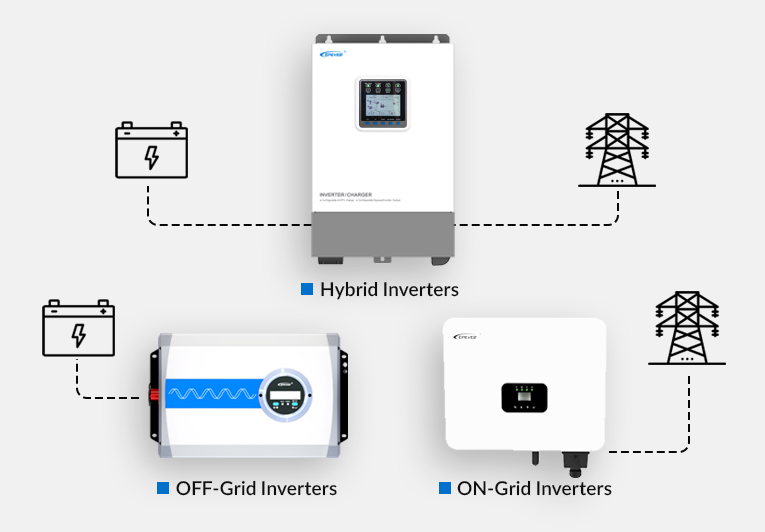An introduction to EPEVER Tracer AN charge controller
- 9 February 2024
- 2475 views
- No Comments
An introduction to EPEVER Tracer AN charge controller
Welcome to this article on EPEVER TRACER AN charge controllers. EPEVER offers two distinct series of Tracer AN charge controllers: the Tracer AN Series (10-40A) MPPT Charge Controller and the Tracer AN Series (50-100A) MPPT Charge Controller. Although they share some similarities, such as their MPPT charge controller technology, these two series have significant differences in terms of their charging and discharge capacity. Therefore, they are suited for different applications. In this article, we will provide an in-depth analysis of each series and their specific use cases.
Tracer AN Series (10-40A) MPPT Charge Controller
If you want to ensure your solar power system operates smoothly and effectively, the Tracer AN Series (10-40A) MPPT Charge Controller is a great choice. These controllers are specifically designed to optimize the energy output from your solar panels while providing ideal battery charging solutions.
In this section, we will delve deeper into the Tracer AN Series (10-40A) MPPT Charge Controller, exploring its features, advantages, and how it can enhance your solar power system. These advanced charge controllers utilize the latest MPPT technology, ensuring the most efficient charging solution for your solar power system. They can also work with a variety of battery types, including lead-acid and lithium-ion, and can be used in a variety of applications, such as RVs, boats, off-grid setups, and other mobile environments.
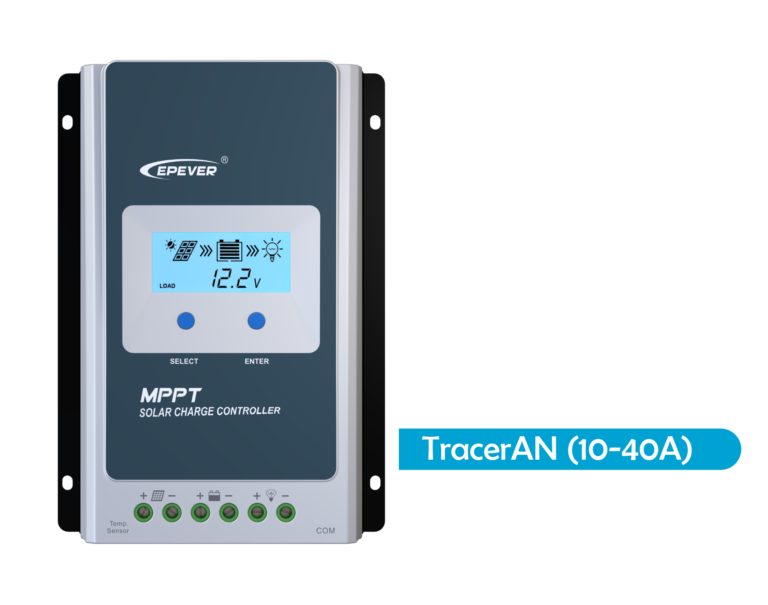
Features of Tracer AN Series (10-40A) MPPT Charge Controller
The TRACER-AN series MPPT solar charge controllers are packed with features that make them stand out from the crowd. Some of the key features include:
– Advanced Maximum Power Point Tracking (MPPT) technology: This advanced technology allows the controller to extract the maximum amount of power from the solar panels and deliver it to the battery bank, ensuring maximum efficiency in your solar power system.
– High conversion efficiency: The TRACER-AN series MPPT solar charge controllers have a high conversion efficiency of up to 98%, ensuring optimal performance and maximum energy harvest.
– Comprehensive protection: The TRACER-AN series MPPT solar charge controllers are designed with comprehensive protection features such as overcharging, over-discharging, short-circuit, and reverse polarity protection, ensuring the safety and longevity of your solar power system.
– LCD display: These controllers come with an easy-to-read LCD display that provides real-time information on the battery voltage, charging current, and other important parameters. Additionally, they offer a real-time energy statistics function and the capability to monitor the system parameters, allowing users to track their system’s performance.
– High-temperature charging power derating function: The TRACER-AN series MPPT solar charge controllers feature a high-temperature charging power derating function, which reduces the charging power of the controller when the temperature exceeds a certain threshold. This feature protects the controller and extends its lifespan.
– Multiple load work modes and capability to program for the DC loads: These controllers offer multiple load work modes, including manual, light ON/OFF, light ON+ timer, and Timer only mode. Additionally, they have the capability to program the controller for different conditions of the DC loads, providing users with greater control and customization over their FLCD solar power system.
Benefits of Tracer AN Series (10-40A) MPPT Charge Controller
Using the TRACER-AN series MPPT solar charge controllers comes with numerous benefits, including:
– Increased energy efficiency: These controllers use advanced Maximum Power Point Tracking (MPPT) technology that enables them to extract the maximum amount of power from the solar panels. This results in increased energy efficiency, which means that more energy is harvested from the sun and less is wasted.
– Longer battery life: TRACER-AN series MPPT solar charge controllers come with comprehensive protection features that help to extend the life of your battery bank. The protection features include overcharge protection, over-discharge protection, and other safeguards that prevent damage to the battery.
– User-friendly design: The TRACER-AN series MPPT solar charge controllers are designed with a user-friendly interface that makes them easy to use and monitor. The LCD screen displays all the necessary information, and the controller can be configured easily using the buttons.
– Wide compatibility: These controllers are compatible with a wide range of battery types, including sealed, gel, flooded, and lithium-ion batteries. This makes them ideal for different applications, and they can be used in various solar power systems.
– Enhanced protection features: TRACER-AN series MPPT solar charge controllers provide enhanced protection features that safeguard your solar power system. These features include overcharge protection, over-discharge protection, short-circuit protection, reverse polarity protection, and overvoltage protection.
– Input and output protection: The controllers come with protection features that protect both the input and output sides of the system. This ensures that the solar panels, battery, and load are protected from any damage.
– Over-temperature protection: The TRACER-AN series MPPT solar charge controllers have an over-temperature protection feature that prevents the controller from overheating. This feature ensures that the controller operates optimally and extends its lifespan.
Overall, the TRACER-AN series MPPT solar charge controllers are an excellent choice for anyone looking to maximize the efficiency of their solar power system while ensuring that their equipment is protected from damage.
Applications of Tracer AN Series (10-40A) MPPT Charge Controller
EPEVER Tracer-AN charge controllers are commonly used in recreational vehicles (RVs), vessels, boats, and camping applications where reliable and efficient power supply is required for the onboard electrical systems. These electrical systems often include lighting, appliances, and other electronic devices. With their ability to regulate the charging process of solar panels, batteries, and other power sources, EPEVER Tracer-AN charge controllers ensure that the electrical systems are always fully charged and ready to use. Whether you are on a boat, RV, or camping, EPEVER Tracer-AN charge controllers provide a reliable and efficient power solution to keep your devices powered even in remote locations.
Appearance: Tracer AN Series (10-40A) MPPT Charge Controller
In this section, we will introduce the various ports, terminals, and buttons of the Tracer AN charge controller and explain their functions in detail.
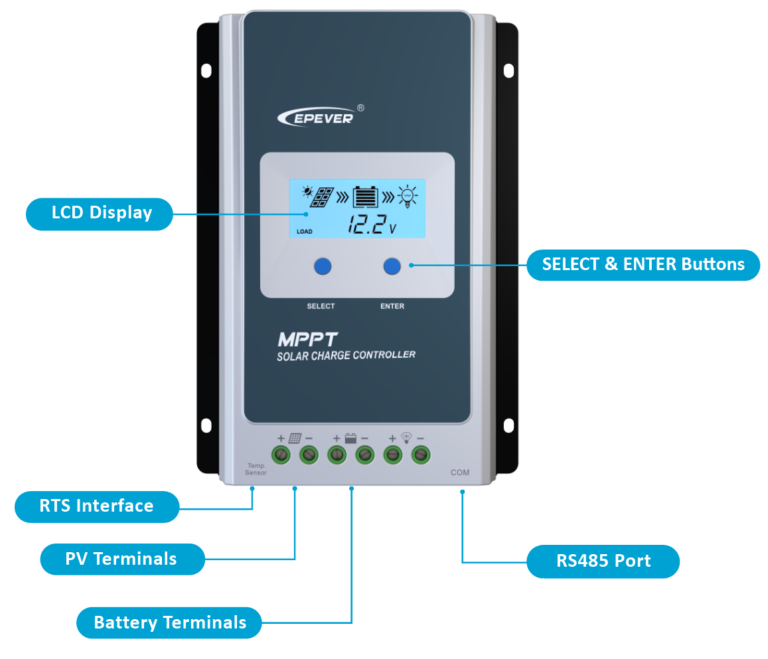
PV Terminals: The Tracer AN charge controller comes with two PV terminals to connect the solar panels. It is important to make sure that the positive and negative wires of the solar panels are correctly connected to the PV terminals of the charge controller to avoid any damage.
Battery Terminals: The battery terminals of the charge controller are used to connect the battery bank. The positive and negative wires of the battery bank must be connected to the corresponding terminals on the charge controller.
SELECT and ENTER Buttons: The SELECT and ENTER buttons are used to navigate through the charge controller’s menu options and settings. They allow the user to adjust the charge controller’s parameters
LCD Display: The LCD display shows important information about the charge controller’s status, including battery voltage, charging current, and state of the charge of the batteries. It also displays error codes and other warning messages if any issues arise.
RS485 Port: The RS485 port allows for remote monitoring and control of the charge controller. This feature is especially useful for larger solar systems that require monitoring from a central location.
RTS Interface: The RTS interface is used to connect a remote temperature sensor. This feature allows the charge controller to adjust the charging settings based on the temperature of the lead-acid battery bank and provide high/low-temperature protection.
It is important to follow the manual instructions carefully during installation.
Tracer AN Series (50-100A) MPPT Charge Controller
For solar power systems that demand high power capacity, the Tracer AN Series (50-100A) MPPT Charge Controller is an efficient and reliable option. With a greater charging and discharge capacity compared to the Tracer AN Series (10-40A) MPPT Charge Controller, this controller is designed to maximize energy harvest and provide optimal battery charging solutions for high-power solar systems.
In this section, we’ll take a closer look at the Tracer AN Series (50-100A) MPPT Charge Controller and its unique features that make it ideal for high-power applications. These advanced charge controllers incorporate the latest MPPT technology to provide the most efficient charging solution for your solar power system. They are compatible with a wide range of battery types, including lead-acid and lithium-ion, and can be used in various applications such as boats, RVs, and other mobile setups.
With its enhanced charging and discharge capabilities, the Tracer AN Series (50-100A) MPPT Charge Controller can handle higher power demands by working in parallel up to 6 units, making it suitable for powering larger systems such as commercial solar installations. So if you’re looking for a robust charge controller to manage your high-power solar system, the Tracer AN Series (50-100A) MPPT Charge Controller is an excellent choice.
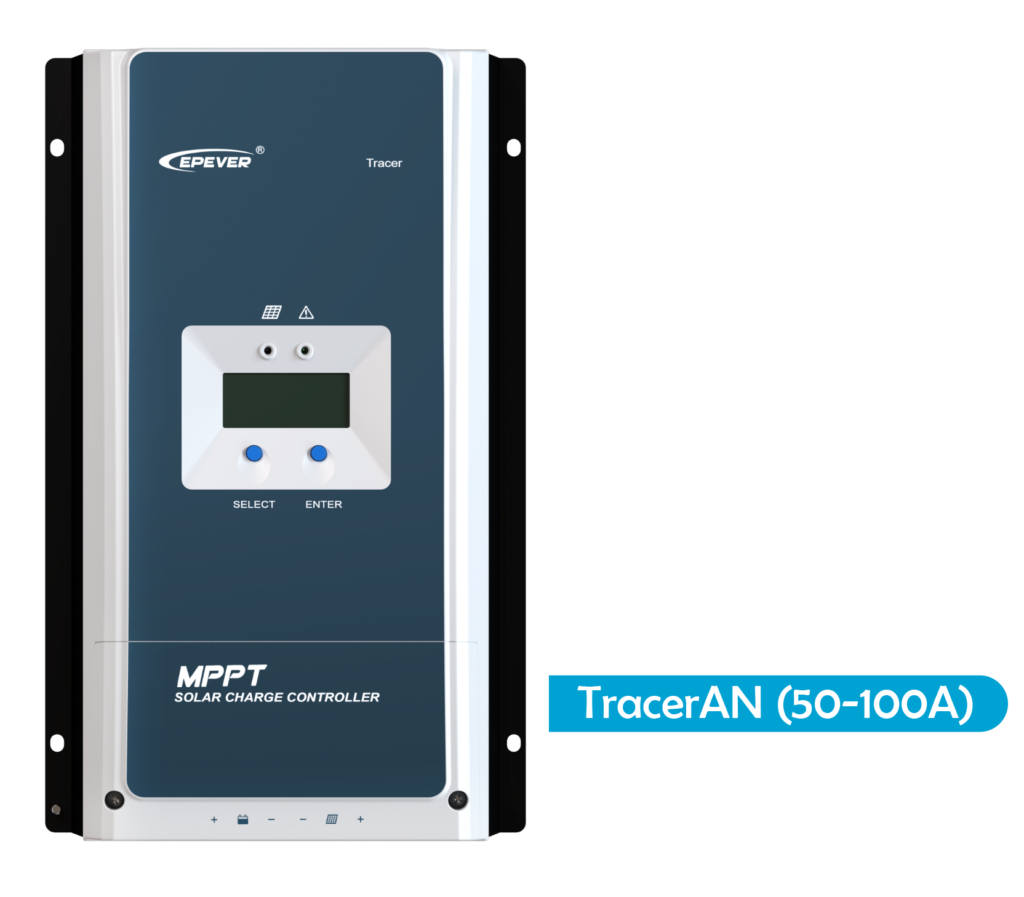
Features of Tracer AN Series (50-100A) MPPT Charge Controller
– MPPT tracking efficiency above 99.5%: The Tracer AN Series MPPT Charge Controllers use advanced Maximum Power Point Tracking (MPPT) technology to ensure that your solar panels are always operating at their maximum efficiency, even in low-light conditions. With a tracking efficiency above 99.5%, you can be sure that you are getting the most out of your solar panels.
– Maximum charge conversion efficiency as high as 98%: The Tracer AN Series MPPT Charge Controllers also feature high charge conversion efficiency, with a maximum efficiency as high as 98%. This means that you can get the most out of your solar panels and charge your batteries quickly and efficiently.
– Support for lead-acid and lithium-ion batteries: The Tracer AN Series MPPT Charge Controllers are designed to work with both lead-acid and lithium-ion batteries, giving you the flexibility to choose the best battery type for your needs.
– Common negative grounding: The Tracer AN Series MPPT Charge Controllers feature common negative grounding, which makes them easy to install and integrate into your existing solar power system.
– Charging current up to 100A: With a charging current of up to 100A, the Tracer AN Series MPPT Charge Controllers are ideal for large solar power systems.
– Charging power and current limitation function: The Tracer AN Series MPPT Charge Controllers also come with a charging power and current limitation function, which allows you to control the charging process and protect your batteries from damage when power or current exceeds the limits.
– High-temperature charging power derating function: The Tracer AN Series MPPT Charge Controllers also feature a high-temperature charging power derating function, which protects the controller from overheating and ensures that it operates optimally in high-temperature environments.
– Relays design for different demands: Utility, generator, and load: The Tracer AN Series MPPT Charge Controllers come with a relay with two interfaces:
Load interface and Utility/Generator interface.
Load interface has the capability to control the load according to the battery voltage.
Utility/Generator interface can provide additional flexibility in case of demand for external power source.
– Support for up to 6 units in parallel: The Tracer AN Series MPPT Charge Controllers can be used in parallel with up to 6 units, giving you the flexibility to scale your solar power system as your needs grow.
– Remote temperature and voltage sensor design: The Tracer AN Series MPPT Charge Controllers feature a remote temperature and voltage sensor design, which allows you to monitor the temperature and voltage of your solar power system from a remote location.
– Isolated RS-485 with 5VDC/200mA and MODBUS protocol: The Tracer AN Series MPPT Charge Controllers also come with isolated RS-485 communication with 5VDC/200mA and MODBUS protocol support, making it easy to integrate the controller into your existing monitoring system.
– Related products: EPEVER also offers a range of related products, including remote meters, temperature sensors, and communication cables, which can be used to further enhance the performance and functionality of your Tracer AN Series MPPT Charge Controller.
Applications of Tracer AN Series (50-100A) MPPT Charge Controller
The Tracer AN Series (50-100A) MPPT Charge Controller is a versatile and reliable solution for a variety of solar power applications. It is commonly used in residential and industrial solar power systems to regulate the voltage and current from solar panels to battery banks or loads, ensuring efficient and effective charging. The Tracer AN Series can handle higher currents of up to 100A, making it suitable for use in larger-scale systems. It is also capable of working in parallel with up to six units, allowing for even greater capacity and flexibility. In addition to traditional solar power systems, the Tracer AN Series can also be used in off-grid systems, telecom stations, and other high-power solar applications. Its reliable and efficient power regulation makes it an ideal choice for applications where consistent power supply is essential.
Appearance: Tracer AN Series (50-100A) MPPT Charge Controller
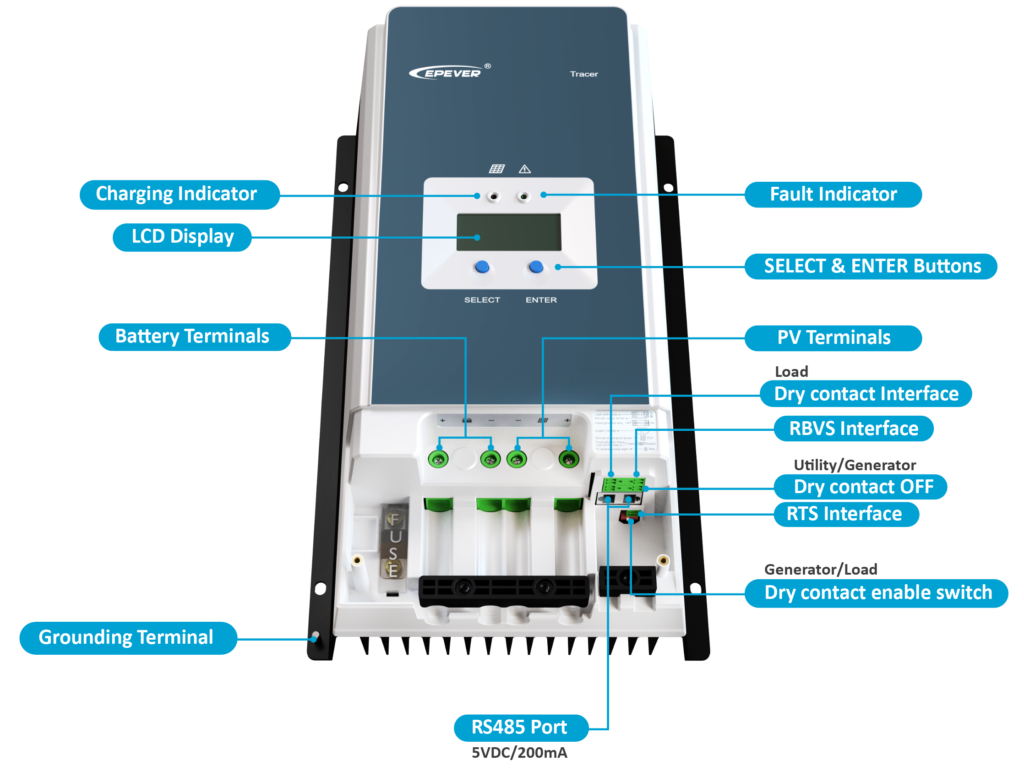
In this section we will introduce the various ports, terminals, and buttons of the Tracer AN Series (50-100A) MPPT Charge Controller and explain their functions in detail.
PV Terminals: The Tracer AN charge controller comes with two PV terminals to connect the solar panels. It is important to make sure that the positive and negative wires of the solar panels are correctly connected to the PV terminals of the charge controller to avoid any damage.
Battery Terminals: The battery terminals of the charge controller are used to connect the battery bank. The positive and negative wires of the battery bank must be connected to the corresponding terminals on the charge controller.
Charging Indicator: The charging indicator is a useful feature that displays the state of the charge of the battery bank. As mentioned, the various charging modes such as bulk charging, absorption charging, and float charging ensure to provide an efficient and safe charging method for the batteries.
Fault Indicator: The fault indicator alerts the user in case of any malfunction or error in the charge controller. It is important to pay attention to this indicator as it can indicate issues with the system that require immediate attention.
SELECT and ENTER Buttons: The SELECT and ENTER buttons are used to navigate through the charge controller’s menu options and settings. They allow the user to adjust the charge controller’s parameters and settings.
LCD Display: The LCD display shows important information about the charge controller’s status, 2including battery voltage, charging current, and state of the charge of the batteries. It also displays error codes and other warning messages if any issues arise.
Grounding Terminal: The grounding terminal provides a connection point for the charge controller’s ground wire. It is important to ensure that the grounding wire is properly connected to prevent any electrical hazards.
RS485 Port: The RS485 port allows for remote monitoring and control of the charge controller. This feature is especially useful for larger solar systems that require monitoring from a central location.
RBVS Interface: The RBVS, or Remote Battery Voltage Sensor, is capable of mitigating the impact of voltage reduction, leading to the acquisition of more precise battery terminal voltage readings and enabling accurate control over the battery.
(Gen/Load) Dry Contact Enable Switch: This switch is used to enable the dry contact interface for the generator or load. It allows the charge controller to detect when the generator or load is connected and adjust the charging mode accordingly.
(Utility/Generator) Dry Contact ON/OFF Interfaces: These interfaces allow the charge controller to detect when the utility or generator is connected. They can be used to trigger an alarm or to automatically switch between charging modes depending on the power source.
RTS Interface: The RTS interface is used to connect a remote temperature sensor. This feature allows the charge controller to adjust the charging settings based on the temperature of the lead-acid battery bank and provide high/low temperature protection.
Conclusion
In conclusion, the EPEVER TRACER AN charge controller is a versatile and reliable device suitable for a variety of applications. The Tracer AN Series, available in both 10-40A and 50-100A MPPT charge controllers, offers impressive features such as maximum power point tracking, multiple load control modes, and a robust protection system. The Tracer AN Series charge controllers’ appearance is sleek and modern, making them an attractive addition to any solar power system.
The benefits of the Tracer AN Series charge controllers include improved energy efficiency, reduced power loss, and longer battery life, making them a cost-effective and sustainable solution for off-grid and grid-tied solar power systems. The Tracer AN Series charge controllers’ applications range from small residential setups to large commercial and industrial installations, offering flexibility and scalability to meet diverse energy needs.
Overall, the Tracer AN Series charge controller from EPEVER are a reliable and efficient choice for solar power system control and management, providing enhanced performance and extended battery life. Whether you’re a residential user or a commercial operator, the Tracer AN Series charge controllers offer the features and benefits you need for an optimal solar power experience.

